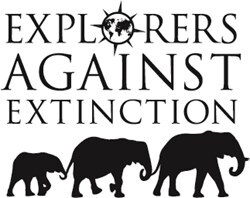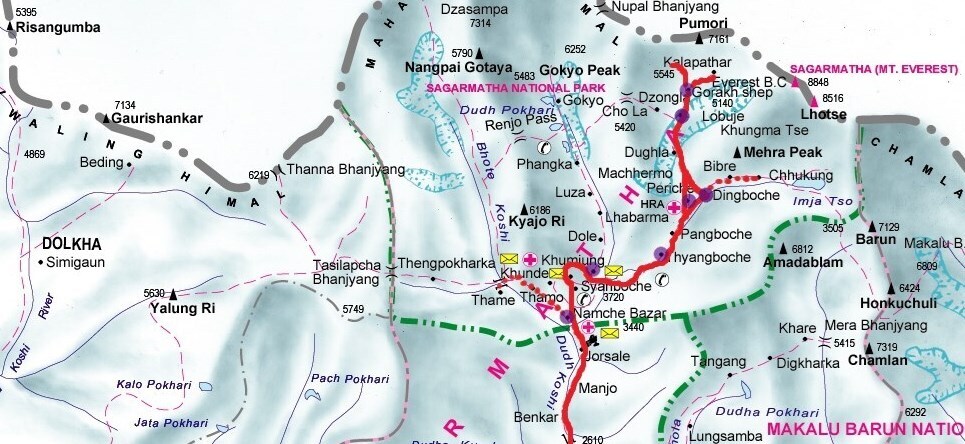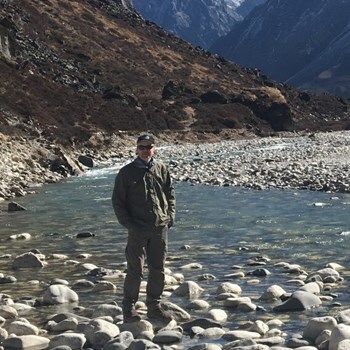Everest Base Camp - Tracing the route of the 1953 Everest Climb
Robert Ferguson
My Story
I shall be following the route taken by the 1953 Everest Expedition that successfully climbed the mountain for the first time. Starting from the small town of Bhaktapur in the Kathmandu Valley I will walk east, crossing the deep valleys cut by rivers running south from the Himalayas, before turning north towards base camp.
In total the ascent on the trip come to just under 10,000 metres or 30,000 ft. This is more than the height of Everest if starting at sea level.
Everest Base Camp is the ultimate personal challenge, climbing to 17,000 ft in the World's highest mountain range, walking on glaciers and breathing air with only half the oxygen content that there is at sea level.
The aim is to raise funds for the Young Explorer Programme of the UK charity Explorers against Extinction (EAE). The participants are all paying for their own flights and arrangements. All money donated goes to EAE, not to subsidise their trip.
EAE campaigns to raise awareness about the threats facing the world’s most iconic wildlife and their habitats. The Young Explorers Programme allows young conservationists to visit and work with small projects, helping them in their work while raising profile and funds for them.
I leave on 20th February 2020. I will be joined by a small team who are flying to Lukla before continuing to Everest, following the route of the 1953 Everest Expedition which successfully places Tensing Norgay and Edmund Hilary on the summit of Everest.
The project patrons are Sir John Blashford Snell, Sir Ranulph Fiennes, Levison Wood, Benedict Allen and Pip Stewart.
Carbon emissions from the trip are being offset through the EAE Carbon for Conservation scheme.
-
Target
£750
-
Raised so far
£1,035
-
Number of donors
14
My Story
I shall be following the route taken by the 1953 Everest Expedition that successfully climbed the mountain for the first time. Starting from the small town of Bhaktapur in the Kathmandu Valley I will walk east, crossing the deep valleys cut by rivers running south from the Himalayas, before turning north towards base camp.
In total the ascent on the trip come to just under 10,000 metres or 30,000 ft. This is more than the height of Everest if starting at sea level.
Everest Base Camp is the ultimate personal challenge, climbing to 17,000 ft in the World's highest mountain range, walking on glaciers and breathing air with only half the oxygen content that there is at sea level.
The aim is to raise funds for the Young Explorer Programme of the UK charity Explorers against Extinction (EAE). The participants are all paying for their own flights and arrangements. All money donated goes to EAE, not to subsidise their trip.
EAE campaigns to raise awareness about the threats facing the world’s most iconic wildlife and their habitats. The Young Explorers Programme allows young conservationists to visit and work with small projects, helping them in their work while raising profile and funds for them.
I leave on 20th February 2020. I will be joined by a small team who are flying to Lukla before continuing to Everest, following the route of the 1953 Everest Expedition which successfully places Tensing Norgay and Edmund Hilary on the summit of Everest.
The project patrons are Sir John Blashford Snell, Sir Ranulph Fiennes, Levison Wood, Benedict Allen and Pip Stewart.
Carbon emissions from the trip are being offset through the EAE Carbon for Conservation scheme.





